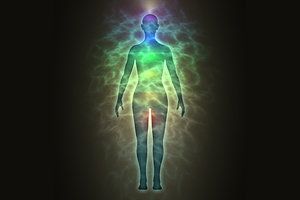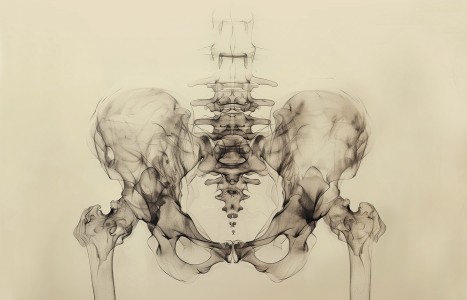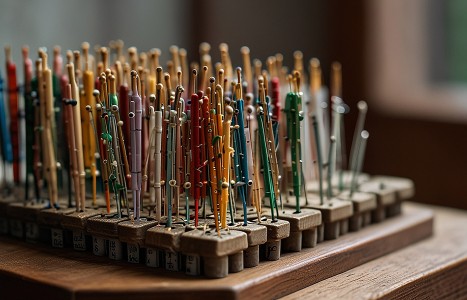People today want convenience, whether it be from their bank, credit card, favorite retail store, or restaurant. They demand it from the companies who hold their loyalty, including their health care providers (you). They don’t want to call and possibly be put on hold, and they want to use an app or schedule an appointment on your website. Here are three reasons your practice can gain by switching to online appointment scheduling.
Spirits of the Points: The Stomach Official
Author's Note: The stomach, known as "The Official of Rotting and Ripening Food and Drink," with its paired official, the spleen, represent the earth element within us. I discussed the stomach official in detail in the June 2017 issue, including its manifestations at the physical, mental and spirit levels.
Using points for their spiritual connotations is key to resolving illness at the mental or spirit levels. Each of the acupuncture points has a name, translated from the Chinese characters, which offers insight into the unique spiritual gifts the point offers. When we are internally quiet, curious and fully present to the patient, we can feel what he or she is feeling and know exactly what point or points are needed.
The following are examples of points on the stomach official. These will have most impact if it has been determined, by traditional methods of diagnosis, that the earth element is the patient's primary elemental imbalance.
Stomach 45: Hard Bargain

Sympathy, the emotion of the earth element, is the perception of, understanding of and appropriate reaction to the needs of another. Sympathy requires a balance of care for oneself and others. Exaggeration to either side is imbalance.
We must care for and nourish ourselves in order to have enough to share. At times, earth-imbalanced patients may feel that it's all too much (a person or a situation) – too difficult, unfair, too much to digest. They may not be able to see the point of view of the other. They may feel unable or unwilling to give, or feel that others just cannot understand and give to them. Rather than a smooth and easy exchange, they feel put upon and resentful, like it's a "hard bargain."
This point helps soften the hardness and restore balance. It helps resolve inner disputes and brings things to the "bargaining table," where cooperatively, disputes and misunderstandings can be worked through; all points of view can be expressed and considered; old and stale grudges and resentments can be let go; agreements can be reached. The patient can be restored to inner peace.
As the metal point of the meridian, the point brings fresh inspiration, insights of value, respect for all sides, justice, and fairness.
Stomach 44: Inner Courtyard
A courtyard is an enclosed space, often surrounded by buildings, open to the sky, and often containing a water feature. The traditional Chinese courtyard was a place of privacy and tranquility. Visitors were received in the outer courtyard. The "inner courtyard" was reserved for intimate, trusted friends and family.
This courtyard provides a place of quiet contemplation, rest, and replenishment for the body, mind and spirit, nurturing inner resources. We consider it for earth-imbalanced patients who are exhausted from constant demands, caring for others to their own detriment, weary from disease, overwork, worry, restlessness, ongoing stress and trauma at any level.
As the water point of the meridian, it brings the quietude of still water, restores flexibility, strength, cleansing, and refreshment.
Stomach 43: Sunken Valley
A valley is an elongated, low-lying area between hills or mountains, typically containing a stream or river. When the rains come or the snow melts, water descends into the valley, joining in its flow.
Valleys are ideal for agricultural growth – rich, fertile, abundant with plants, insects, fish, and land animals that are attracted to the rich plant life and water. Thus, many civilizations have settled in valleys because of this abundance.
As the wood point of the meridian, we consider this point for patients who need a kick-start: the newness of spring growth, rather than simply recycling old habits, ingrained thought patterns, and concepts. The flowing water in this deep valley brings new life, carries away old waste, and restores the ability to "see" with clear eyes and new insight.
Wood controls Earth by sinking its roots within her, preventing the earth from being eroded and washed away. Thus, we also consider this point for earth-imbalanced patients who are easily overwhelmed and uprooted, unable to confidently stand firm and upright.
Stomach 42: Rushing Yang
This is the source point of the meridian. Like all source points, it has a built-in "regulating switch," which means that it cannot be overtonified or oversedated, making it among the safest points on the whole of the body. Source points draw from the deep reserves of the official, bringing just the correct amount of energy needed – no more and no less.
Belonging to the earth element, this point brings the qualities of nourishment, care, stability, balance, and comfort – all the qualities a good mother would bring to her child. We would consider this point for the patient who feels malnourished at any level, including the perception, "No one understands or cares about me," and/or "I don't care about anyone else."
Late summer is the season of Earth – harvest time. This is the season when the Earth gives forth its bounty. Without a harvest, we would perish. Harvest time is a busy, active and cooperative time. Many hands join in to bring in the harvest at its peak of ripeness.
As the point name suggests, the ability to join in and participate with enthusiasm – rushing forward ("yang") – is key to a successful harvest. Thus, we consider this point for the earth-imbalanced patient who is unable or unwilling to participate. He or she may not see themselves as an important part of the endeavor – whether it be on the farm, at their job, in their family, in their social life, or on a planetary scale.
In truth, we all have a vital part to play, especially now, as the state of our beautiful planet – our Mother Earth – is in such jeopardy. There is literally no time to waste.
Author's Note: There are many interpretations and uses of these points in various traditions; the preceding is not intended to encompass all possibilities. English translations of point names are those taught by Professor J.R. Worsley and appear in Traditional Chinese Acupuncture, Volume 1: Meridians and Points by J.R. Worsley; Element Books, 1982.



